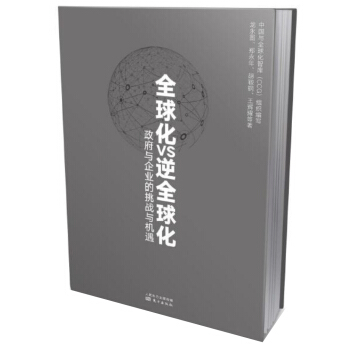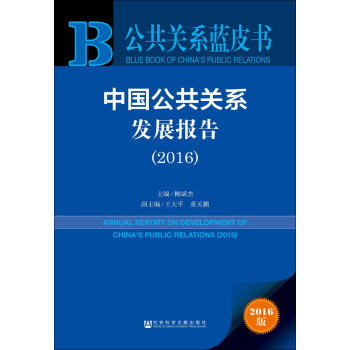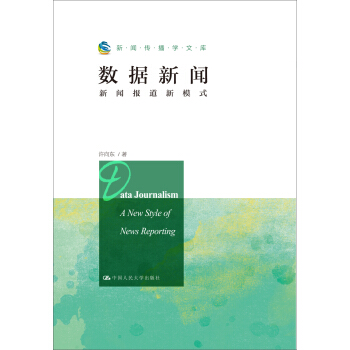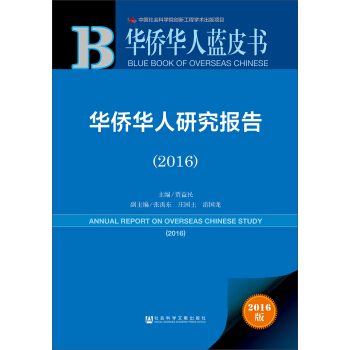![翻译的修辞符号视角研究 [TOWARD A RHETORICAL-SEMIOTIC THEORY OF TRANSLATION]](https://pic.tinynews.org/11407870/rBEhWFMv2dQIAAAAAAD8JocAdQkAAKmZAHTTx4AAPw-954.jpg)

具体描述
编辑推荐
适读人群 :专业读者现代语言学为翻译和翻译活动提供了比较科学的理论基础。目前大量的翻译研究都将翻译纳入语言学的范畴内,聚焦于语音学、形态学和句法学的层面。基于此,《翻译的修辞符号视角研究》构建了翻译的修辞符号学视角研究,以打破翻译研究的这一局限性,并论证了其作为一个崭新的突破性的方法在解释长期以来关于翻译等效、直译与意译、归化与异化的争论中的优越性,阐明了修辞符号意义在翻译中的传递。
内容简介
《翻译的修辞符号视角研究》在构建修辞符号学理论的基础上,在现有的翻译理论框架下探讨修辞符号学视角的翻译研究,《翻译的修辞符号视角研究》旨在解决翻译的符号意义问题,演示修辞符号学如何为符合的翻译建立逻辑范式,由此阐释两种语言系统和文化之间符号翻译中的意义缺失。
翻译是把一种语言承载的信息用另一种语言表达出来。现代语言学为翻译和翻译活动提供了比较科学的理论基础。目前大量的翻译研究都将翻译纳入语言学的范畴内,聚焦于语音学、形态学和句法学的层面。基于此,本书构建了翻译的修辞符号学视角研究,以打破翻译研究的这一局限性,并论证了其作为一个崭新的突破性的方法在解释长期以来关于翻译等效、直译与意译、归化与异化的争论中的优越性,阐明了修辞符号意义在翻译中的传递。
作者简介
作者曹磊,博士,上海外国语大学讲师,担任过多门课程授课老师,包括高级综合英语、听力与口译、语言学、视听等课程。发表的论文有《从符号学角度谈翻译》、《语篇修辞性与翻译》、《论口译和笔译的关系》、《语篇意识观照下的翻译》等。参与编写过多本专业英语教材,有自考本科教材《听力与口译》、《中级口译教程》、《基础口译教程》、《商务英语口语》等。
目录
Chapter 1 Introduction
1.1 Origin and Rationale for the Present Study
1.2 Definitions of Key Terms
1.3 Objectives of the Research
1.4 Methodology
1.5 Organization of the Dissertation
Chapter 2 Literature Review
2.1 About Translation Studies
2.1.1 Definition and Development of Translation Studies
2.1.2 Integrated and Interdisciplinary Approaches to Translation Studies
2.1.2.1 Integrated Approaches to Translation Studies
2.1.2.2 Interdisciplinary Approaches to Translation Studies
2.1.3 Non-Western Traditions in Translation Studies
2.1.4 New Trends
2.2 Issues and Debates in Translation Studies
2.2.1 Equivalence
2.2.1.I Nida's Concept of Formal Equivalence
2.2.1.2 Nida's Concept of Dynamic Equivalence
2.2.1.3 Other Concepts of Equivalence
2.2.1.4 Summary
2.2.2 Context in Translating
2.2.2.1 Register Analysis
2.2.2.2 Context and Translation
2.2.2.3 Summary
2.2.3 The Translator's Role
2.2.3.1 The Translating Process
2.2.3.2 Translatability and Untranslatability
2.2.3.3 Foreignization and Domestication
2.2.3.4 Summary
Chapter 3 Toward a Rhetorical-Semiotic Approach in Translation Studies
3.1 Key Concepts in Semiotics
3.1.1 The Meaning of Signs
3.1.2 Semiotics
3.1.2.1 De Saussure's Sign Systern
3.1.2.2 Peircean Signification System
3.1.2.3 Roland Barthes' Notion
3.1.3 Semiotic Science
3.1.3.1 Logical Semiotics
3.1.3.2 Linguistics as a Branch of Semiotics
3.1.3.3 Syntax, Semantics and Pragmatics
3.1.3.4 Semiotics of Texts
3.2 Semiotic Approach toward Rhetoric
3.2.1 The Revival and Development of Western Rhetoric
3.2.2 Peirce's Rhetorical Turn
3.2.3 Semiotic Approach toward Rhetoric
3.3 Toward a Rhetorical-Semiotic Approach in Translation Studies
3.3.1 Translation and Semiotics
3.3.2 Rhetorical Translation Studies
3.3.3 The Translating of Meaning
3.3.4 Message Decoding and Encoding —— the Process of Translation
3.3.4.1 Context
3.3.4.2 Code
3.3.4.3 Decoding and Encoding
3.4 Summary
Chapter 4 Rhetorical Encoding of Linguistic Signs
4.1 Communication, Linguistic Expressions and Rhetorical Encoding of Linguistic Signs
4.1.1 Characteristics o{ Communicative Activities
4.1.2 Definition of Rhetorical Encoding
4.1.3 Guidelines of Rhetorical Encoding
4.1.3.1 Conventions
4.1.3.2 Logic
4.1.3.3 Appropriateness
4.1.3.4 Pragmatic Purposes
4.2 Classification of Rhetorical Encoding
4.2.1 Logic Rhetorical Encoding of Linguistic Signs
4.2.1.1 The Category of Logic Signs
4.2.1.2 Basic Function of Logic Rhetoric
4.2.1.3 Meticulous, Compact and Intact Quality
4.2.1.4 Denotative and Monosemantic Referential Meaning
4.2.1.5 Objective, Reasoning and "Hot" Messages
4.2.2 Aesthetic Rhetorical Encoding of Linguistic Signs
4.2.2.1 Expressive Aesthetic Signs
4.2.2.2 Aesthetic and Emotional Functions
4.2.2.3 Flexible and Open Quality
4.2.2.4 Connotative Semantic Reference
4.2.2.5 Subjective, Emotional and "Cold" Messages
4.2.3 Semantic Rhetorical Encoding and Rhetorical Encoding of Linguistic Forms
4.2.3.1 Thoughts and Emotions
4.2.3.2 Linguistic Images
4.3 Summary
Chapter 5 Rhetorical Decoding of Linguistic Signs
5.1 Definition of Rhetorical Decoding
5.2 The Capabilities Required by Rhetorical Decoding of
Linguistic Signs
5.2.1 A Thorough Knowledge of the Linguistic Sign System
5.2.2 Strong Capability of Logic Thinking and Reasoning
5.2.3 Strong Image Thinking Ability
5.2.4 Being Rhetorically and Artistically Accomplished
5.2.5 Correspondent Cognitive Abilities, Intellectual Level and Emotional Experience
5.3 Classification of Rhetorical Decoding
5.3.1 Logic Rhetorical Decoding of Linguistic Signs
5.3.1.1 Literal Logic Decoding of Linguistic Signs
5.3.1.2 Free Logic Decoding of Linguistic Signs
5.3.2 Aesthetic Decoding of Linguistic Signs
5.3.2.1 Semantic Interpretation
5.3.2.2 Image Aesthetic Appreciation
5.4 Summary
Chapter 6 The Retaining of Meaning in Translation from Rhetorical Semiotic Perspective
6.1 The Integration of Rhetorical Semiotics and Translation Studies
6.1.1 The Feasibility of Applying Rhetorical Theory to Translation Studies
6.1.2 The Construction of a Dynamic Meaning Theory of Translation
6.1.3 The Retaining of Meaning in Translation from Rhetorical-Semiotic Perspective
6.1.4 Summary
6.2 The Transfer of Meaning
6.2.1 The Transfer of Linguistic Meaning
6.2.1.1 Orthographic and Phonological Barriers ..
6.2.1.2 Grammatical Barriers
6.2.1.3 Barriers of Figures of Speech
6.2.2 The Transfer of Referential Meaning
6.2.3 The Transfer of Pragmatic Meaning
6.2.3.1 Cultural Words and Expressions
6.2.3.2 Idioms
6.2.3.3 Figures of Speech
6.2.3.4 The Reproduction of Register and Other Codes in Translation
Chapter 7 Conclusions and Implications
7.1 Major Findings and Contributions of the Study
7.2 Limitations of the Study
7.3 Areas for Further Research
Bibliography
Acknowledgements
精彩书摘
Undeniably, linguistic difference is the first barrier to be overcome so that communication may take place. However, some other kind of background knowledge must be shared by communicants in order for the message to be fully understood. It is at this point that rhetorical semiotics comes into play. The study of rhetoric is a study of the effect of linguistic communication. It concerns such factors as communicator (including the addresser and addressee of the linguistic message), the signifier and signified, linguistic context and so on, some of which belong to pragmatic domain. Therefore, pragmatics is a major part of semiotics. Rhetorical studies in the past somehow laid emphasis on the studies of technical skills of language use, and helped in enabling language users with concrete methods and techniques of linguistic expressions to improve communication effects. However, it lacks to some extent philosophical theoretic depth resulting in the difficulty in drawing inherent laws for rhetoric. Since C. S. Peirce and De Saussure laid foundations for modern semiotics, after continuous deepening and systemizing, semiotics has become a basic theory for social communication. The applications of semiotic principles and methods to various subjects and fields of social sciences, such as logic, linguistics, arts and natural sciences, are bringing them to a new philosophical height and enlightening understanding of their nature and governing laws. Semiotics has opened a new way to the in-depth studies of these subjects, thus gaining an important methodological meaning. Therefore, to apply semiotic principles and methods to rhetorical analysis and studies can provide a new revolutionary perspective for rhetorical studies.
Last but not least, rhetoric, in its essence, is the encoding of linguistic signs. But rhetoric is not confined to the study of general theories of linguistic sign encoding in the abstract sense, but sees from the perspective of concrete transmitting of linguistic messages. In this regard, semiotic study of rhetoric belongs to the domain of pragmatics. We maintain that losses of meaning in translation are sometimes better accounted for using the framework of rhetorical semiotics. Unlike linguistic models of translation, which overlook the cultural aspects, the rhetorical-semiotic perspective, with its guidelines of conventions, logic, appropriateness and pragmatic purposes, can clearly state the interrelation between our innate linguistic competence, using that competence, and connecting it to our culture.
All the above mentioned viewpoints and facts lay solid grounds for this study. The present study is mainly concerned with approaching translation studies from rhetorical-semiotic perspective based on the construction of a new theory of rhetorical semiotics and under the framework of existing translation theories with a view to contributing to the issue of semiotic meanings in translation, in particular, to showing how the rhetorical-semiotic process builds a logical paradigm for the translation of signs, hence efficiently accounting for the losses occurring in the translation of signs between two different linguistic systems and cultures. On the basis of these claims and facts, we illustrate an inventory of losses of linguistic, referential and pragmatic meanings that occur in the translation, in particular, of literary texts. The translation is analyzed to investigate the main causes of the losses in the hope of finding a suitable approach that minimizes such losses in translation.
……
前言/序言
《翻译的修辞符号视角研究》的著者曹磊博士曾是我的学生,除了具有其他英文女博士同样的特质外,她还能说上一口几近极致的英文,这倒是不多见的。、
在她的这部论著付梓前,我很高兴能为这一研究课题的主题发展和评价发表一些识见。
曹磊博士的研究领域是西方修辞学理论及其应用,由于教学和工作需要又对翻译研究产生了兴趣,兴许这就是她做这一研究课题的缘由。
其实,做这一课题的难度是很大的,因为,在翻译学领域里,国内外许多学者已经做了不少很有意义的研究,他们的研究成果已对这一学科的理论构建和发展做出了重要的贡献。
然而,在如何突破翻译局限性这一问题上,现有的各种翻译理论似乎还没有取得突破性的进展。西方修辞学理论又能对解决翻译局限性有什么贡献?这对以西方修辞学理论为主攻方向的曹磊博士提出了挑战。
修辞和翻译,究其实质,都包含着两个非常相似的活动过程。修辞
用户评价
阅读这种理论性极强的著作,常常会伴随着一种“意图”与“实际阅读”之间的落差。我期待这本书能提供一种清晰的分析路径,而不是仅仅堆砌晦涩的术语。想象一下,如果书里有一章专门探讨“陌生化”的修辞策略,那将是多么精彩。译者如何通过选择那些在目标语境中带有强烈“异质感”的符号结构,来达到凸显原作异域性的目的?这种有意识的符号操纵,难道不正是翻译的精髓之一吗?我希望作者能够用令人信服的论据,将这些抽象的符号学概念与具体的翻译实践连接起来,展示出理论的实践价值。如果它能成功地构建起一个操作性强的分析模型,那么任何翻译工作者或研究者,都能从中找到检验和提升自身翻译质量的标尺,这才是对读者最大的馈赠。
评分这部著作给我的感觉,更像是一份精密的学术地图,试图为翻译研究这片广袤的领域绘制出一条清晰的理论路径。从读者的角度来看,我更关注的是,这种理论如何能影响我对已出版译本的判断力。如果作者真的建立起了一套“修辞符号”的分析体系,那么我们就可以用它来评估一部译作的优劣,不仅仅看它是否“信达雅”,更要看它在多大程度上成功地模拟了原作的“说服力”和“暗示性”。我设想,书中或许会列举大量的案例,分析不同译本在处理特定修辞手法,比如隐喻、反讽或者语篇结构时,所采取的不同符号选择,以及这些选择如何最终影响了读者的阅读体验和对主题的理解。这种自上而下的理论建构,对于我这种日常阅读者来说,提供了一种全新的、更具批判性的阅读工具,让我不再满足于浅层次的文本接受,而是渴望探究文本背后的深层运作机制。
评分这本书的书名结构暗示了一种从现象到本质的探求过程,即从翻译的“外显行为”(修辞)入手,深入到其“内在结构”(符号)。我更倾向于认为,这部作品的核心在于重新定义了“翻译的有效性”。它可能不再将有效性等同于与原作者的等值,而是将其看作一种在特定交际情境中达成的“修辞成就”。这意味着,一个成功的译本,是一个在目标读者的符号系统中成功“注册”并产生预设影响的文本。读完这本书后,我希望自己的思维模式能被彻底刷新,从关注“译者做了什么”转向关注“读者接收到了什么信号,以及这些信号是如何被符号系统编码的”。这种由关注产出转向关注接受的视角转换,对于理解当代全球化背景下的文本流动和意义协商,无疑具有深刻的启发意义。
评分这本书的封面设计和章节标题都透露出一种对形式逻辑的执着追求。它似乎不满足于描述翻译现象,而是执着于“建构”理论。我推测,在核心论述部分,作者很可能借鉴了皮尔斯或索绪尔的符号学框架,并将其与古典修辞学的逻辑(比如,关于说服的三个要素:情志、信誉、逻辑)进行嫁接。这种跨学科的整合本身就充满了挑战性。对于我而言,最引人入胜的部分,可能在于它如何处理“文化”和“语境”这两个变量。翻译绝非真空中的操作,它必然受到社会历史和文化预设的影响。这本书或许会论证,每一次翻译的“修辞行为”,都是在目标文化符号系统中嵌入或重构某些特定意义,从而达成一种新的“有效沟通”。如果理论能清晰地解释这种复杂的文化符号互动,那么它将不仅仅是一本翻译理论书,而是一本关于跨文化传播和意义生产的哲学论著。
评分《翻译的修辞符号视角研究》这个书名本身就带着一股浓厚的学术气息,光是“修辞”和“符号”的结合,就让人预感到这不是一本轻松的读物。我作为一个普通的文学爱好者,在书店里偶然翻开它,最初的印象是,它似乎想构建一个宏大的理论框架,试图用符号学的严谨去解构翻译这个看似模糊的实践过程。书里大概会探讨,译者在选择每一个词汇、每一个句式时,都不仅仅是简单的语言转换,而是在运用一种“修辞策略”。这种策略,就像是在和原作进行一场对话,同时也在向目标读者进行说服。我猜想,作者会深入剖析文本中的能指和所指之间的张力,以及这些符号如何在不同文化语境中产生歧义或产生新的意义。对我来说,这样的理论深度读起来可能会有些吃力,但我好奇的是,这种理论是否能真正指导我在阅读外文原著时,更深层次地理解译者是如何“重塑”文本的。它或许会挑战我们对“忠实”翻译的传统观念,让我开始思考,翻译本身是否就是一种最高级的文学创作。
相关图书
本站所有内容均为互联网搜索引擎提供的公开搜索信息,本站不存储任何数据与内容,任何内容与数据均与本站无关,如有需要请联系相关搜索引擎包括但不限于百度,google,bing,sogou 等
© 2026 book.tinynews.org All Rights Reserved. 静思书屋 版权所有

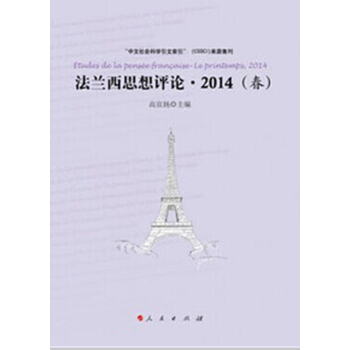


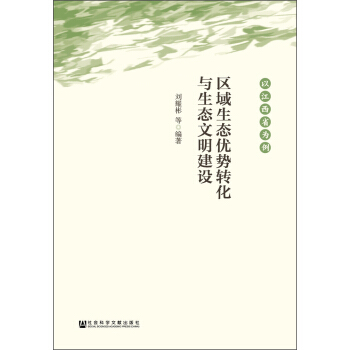

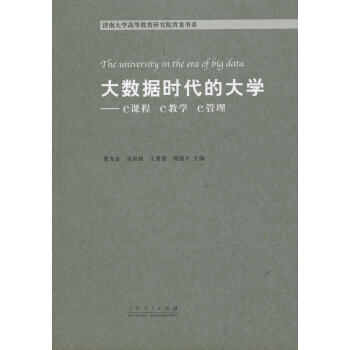

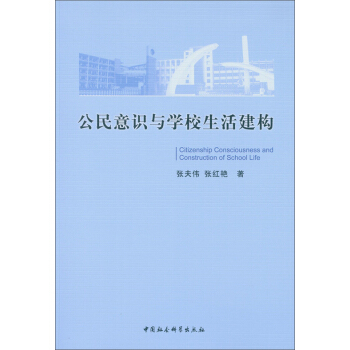

![中国政治传播研究:基础与拓展(第1辑) [Studies of Chinese Political Communication Basics and Advances] pdf epub mobi 电子书 下载](https://pic.tinynews.org/11993843/5821a2b7N4b1c550f.jpg)




